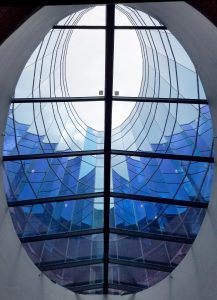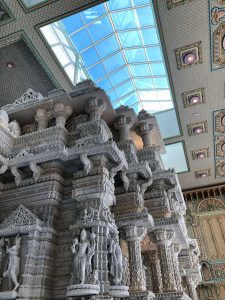Part 1: Rethinking R-Value — Solving the Thermal Performance Myth Around Skylights
Natural light elevates a space like nothing else—brightening interiors, boosting wellness, and enhancing architectural intent. Yet, despite the well-documented benefits of daylighting, one objection continues to surface across design teams:
“Skylights are thermal black holes.”
“Won’t this kill our R-value?”
“Aren’t they just glorified heat vents?”
At Crystal Structures Glazing, we hear these concerns—and we get it. The fear of heat loss in winter or overheating in summer is real, especially when sustainability and energy modeling are key drivers in today’s design process.
But let’s set the record straight: not all skylights are created equal.
Let’s dive into the data, bust the myths, and explore the high-performance solutions that make skylights not just viable—but valuable—in energy-conscious design.
The R-Value Reality: It’s All in the Details
Architects often compare skylights to typical roof assemblies, and the contrast is stark. For example:
- A standard roof in many U.S. climate zones might be rated at R30 or higher.
- A basic dual-glazed skylight (IGU with Low-E) will average around R3.
- Single-layer acrylic domes or fiberglass skylights may deliver only R1–R2.
At face value, it seems like a huge loss. But context is everything. R-value isn’t the sole metric that defines performance, especially when you’re designing a whole building that balances heating, cooling, and lighting demands.
Here’s how different Crystal Structures glazing types actually stack up:
| Glazing Type | U-Factor | R-Value | Notes |
|---|---|---|---|
| Laminated IGU w/ Low-E Glass | 0.28 | ~R3.57 | Standard in Galaxy Series |
| Multiwall Polycarbonate (16mm) | 0.26 | ~R3.85 | Diffused daylight, high impact |
| Polycarbonate IGU (twin wall + airspace) | 0.18 | ~R5.55 | Exceptional performance in cold zones |
Crystal Insight: Real Project Savings
On a recent educational build in the Upper Midwest, the project team originally specified fiberglass units. After modeling the thermal losses, Crystal Structures proposed a switch to twin-wall polycarbonate IGUs. The result?
12.6% savings in projected heating costs, plus improved daylight diffusion with less glare.
This wasn’t just a better-performing system, it helped the project qualify for energy efficiency incentives and added to their LEED daylighting credits.
Beyond the R-Value: Whole Building Energy Impact
What R-value doesn’t reflect is the savings gained through reduced electric lighting. When designed properly, skylights offset their thermal cost with lighting efficiency.
Consider this:
- Lighting accounts for 15–25% of commercial energy use.
- Skylights designed for daylight autonomy can reduce lighting loads by up to 60%.
- One Crystal Structures elementary school project saw a 43% reduction in lighting energy usage—without sacrificing comfort.
That’s not just energy savings, it’s carbon reduction, occupant wellness, and performance synergy.
Rethinking the Spec: Work Smarter with the Manufacturer
Whats one of the biggest reasons skylights underperform in the field? They were value-engineered late, or the original spec didn’t match the building’s true performance goals.
That’s where our approach at Crystal Structures Glazing is different:
Editable Specifications
We provide editable CSI-formatted specs that make it easy to tweak U-values, glazing layers, and structural load factors to meet your project’s thermal goals.
Free Design Assistance
Our team will review your daylighting plan, suggest an ideal design, and recommend framing/glazing packages—all at no cost and with CAD support if needed.
Full System Engineering
From curbs and seals to framing, weepage, and coatings, our Galaxy and Skyview Series systems are engineered as fully integrated assemblies—not just “a piece of glass in a hole.”
Change the Narrative: Skylights Can Be Smart, Sustainable, and Stunning
Let’s stop treating skylights like liabilities. With modern glazing science, strategic daylighting design, and early involvement from manufacturers, they become:
- Tools for reducing artificial lighting load
- Solutions for occupant health and productivity
- Contributors to LEED, WELL, and Net Zero goals
- Stunning architectural statements with function and form
Ready to Elevate Your Next Design?
We’re here to help from concept to completion. Want a quick glazing comparison, editable spec, or thermal model? Just reach out.
- Contactus@csglazing.net
- Schedule a CEU: Enhancing LEED Design Through Skylights – jsucher@csglazing.net
- Our Architectural Design Assistance Center – Launching Fall 2025
Coming up in Part 2 of our series:
“No More Drips – Engineering Skylights to Eliminate Condensation and Leaks”



